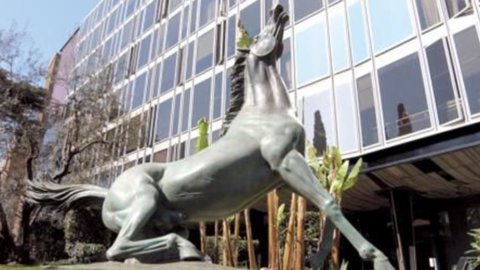While it still hovers, after the rumors of a few days ago, the "ghost" of a tower company that holds Rai Way, Ei Towers and Inwit together, a rumor was circulating in Viale Mazzini and its surroundings until yesterday: "we only speak if we are asked" while, on the merits, dense fog. It is still total darkness on what the corporate form should be, who should be part of it, what role and what weight public control (Cassa Depositi e Prestiti?) could have, the perimeter of its range of action, the legislative definitions and times of realization.
Just for today, Friday afternoon, it was the meeting of the Council of Ministers has been set for 18 pm, later than usual to allow Prime Minister Paolo Gentiloni to return from the Brussels European Council. And although it has not been placed on the agenda, the wait is that finally let the draft of the Rai Concession come to light which, subsequently, will have to pass to the Parliamentary Supervisory Commission on Rai for the expression of a mandatory but non-binding opinion. When it comes to Rai, twists and turns are always possible, including the possibility of yet another false start, after the three postponements accumulated so far. The rumors, however, bode well and indicate that the text, after the final touches, is now ready. The concession will have a ten-year duration and will establish the new mission of the state television.
Precisely this theme of the Concession will be the main terrain of a large part of the forthcoming battles on telecommunications, not only audiovisual. The Rai Convention, in fact, contains various elements which have a significant impact on the entire supply chain of the TLC system in our country. The first among them is the public service broadcast model which, in turn, also has a considerable influence on the industrial policy choices of the other broadcast operators. First of all, the principle of accounting separation to which Rai is subject leads directly to the crux of economic resources available: license fee and advertising revenue. If the amount of the fee remains uncertain every year, how is it possible to draw up an industrial plan which, by its nature, should have a multi-year scope and, consequently, how is it possible to set up technological development projects without the certainty of the resources to count on? Due to the well-known law of physics, where there is a void another person occupies the space left free.
In the new Concession, always in compliance with the Community provisions on the subject, we have heard of redistribution of advertising loads, which would be accounted for with more penalizing crowding ceilings than the previous provisions. It seems that in Viale Mazzini they have estimated a loss on this front of around 100 million euros which, inevitably, could take other paths in the advertising market. So as not to get around it, a first beneficiary of such a hypothesis could be the main private operator, Mediaset, which would see very useful cash arriving precisely for those well-known projects of expansion or revision of its business model.
As known, the radio and television audience is no longer mechanically linked to generalist programming and is increasingly oriented towards new forms and models of use of the TV product. The next Concession, of which few and confused indiscretions are known, in what terms and in what way it takes into account, for example, of the diffusion of broadband or, rather, as we have written, of the Community provisions on the reallocation of frequencies on 700 Mhz capable of radically changing the methods of broadcasting television signals through DTT (Digital Terrestrial)? Broadband and 5G could become a lethal mix for the current system of transmission towers to make way for other broadcast possibilities. To what extent is all of this foreseen in the new Concession and, consequently, what role does the Rai Concessionaire entrust to the listed and controlled company in Via Teulada? Only after the government's plan has been unveiled will it be possible to understand whether the new Concession is destined to fully enter the country's industrial policy 4.0 or is simply destined to plug some holes.
For this reason prevailing considerations, awaiting certain news, and in this context, the "marriage that needs to be done" between Rai Way and Ei Tower, as a first step towards the single pole of the towers, appears increasingly, in these circumstances, not yet mature.





